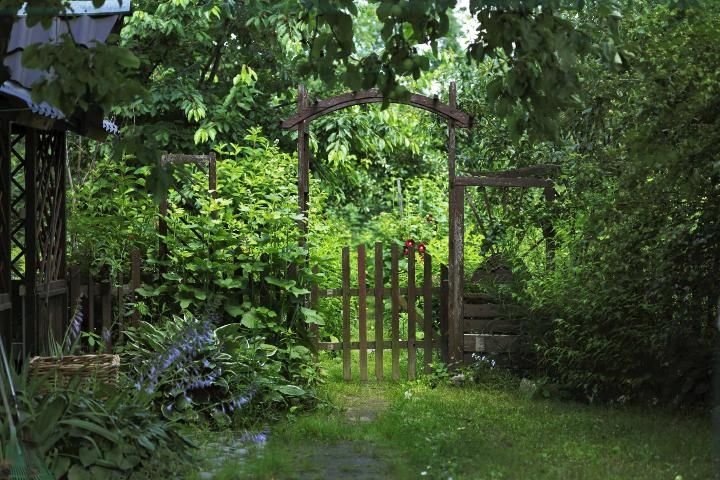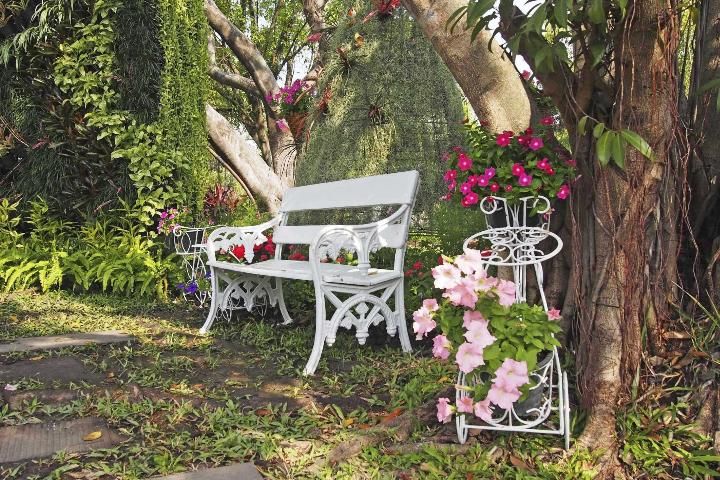
Credit: Bart_Kowski/iStock/Thinkstock.com
Trees and the shade they cast provide welcome relief from Florida's intense sun and heat, but gardening in shade can be challenging.
Lawn grasses are especially difficult to grow in moderate to deep shade. They typically need at least 6 hours of sun, although certain species and cultivars can adapt to less. Additionally, most vegetables and fruit crops demand extended periods of full sun to produce well.
Shade shifts daily, seasonally, and over time as trees grow. Carefully analyzing where and when shade occurs is a first step. Also, recognizing types of shade is important as some kinds of shade are suitable for growing plants while other types are very problematic.
For example, many shade-tolerant plants prefer the following conditions:
- Four or fewer hours of full sun, preferably morning or evening
- Dappled shade all day
- High, shifting shade (pine shade)
Examples of difficult shade include the following areas:
- Dense and dark (no sun)
- In the shadow of buildings
- Dominated by tree roots
- Very wet or dry
Sometimes difficult shade can be improved by lifting or thinning the tree canopy or large shrubs so more sun or indirect light can penetrate. Keep in mind that there are right and (very) wrong ways to prune trees. Rely on a professional, such as an ISA Certified Arborist, to do the job. See https://www.treesaregood.org/findanarborist to find an ISA Certified Arborist.
Sometimes the best solution for difficult shade is to forget trying to establish plants in the area; instead convert it to an outdoor garden room enhanced by seating, garden art, mulch, hardscape, a water feature, a birdbath, or other focal points. Where possible, shade-tolerant plants (see below) can be grown in colorful containers where they will not have to compete with tree roots. Leave the leaf litter that falls and allow these areas to be "self-mulching."

Credit: Ratana21/iStock/Thinkstock.com
The following types of plants are generally good candidates for shade:
- Plants with broad leaves
- Foliage plants (houseplants) for cold-protected areas of south and central Florida or for use as cold-tender annuals (Table 3)
- Most ferns
- Numerous tropical perennials in the Acanthaceae family (Table 2)
- Woodland native plants
Tables 1, 2, and 3 list some plants that tolerate reduced sunlight. These lists are not exhaustive.
Every plant has cultural needs besides light. Make sure to select plants that are suited to the site ("right plant, right place").
A few other considerations when growing plants in shade include the following:
- Areas under tree canopy tend to be warmer, frost-free spots more amenable to cold-tender plants.
- Digging among the roots of trees and shrubs is difficult, so start with smaller plants that do not need a large planting hole. Water them frequently until they are established.
- Fertilizer cannot compensate for inadequate light. It is not a substitute for photosynthesis.
- Shaded lawns should be mowed higher and receive less fertilizer, water, and traffic.
- For color in shady areas, use plants that produce light-colored flowers. Dark flowers do not show up as well.
- Your local UF/IFAS Extension office can verify the reliability of a plant in your county (http://sfyl.ifas.ufl.edu/find-your-local-office/).
Additional Resources
Chaplin, L. T., and M. M. Brandies. 1998. The Florida Gardener's Book of Lists. Dallas, TX: Taylor Publishing.
Dehgan, B. 1998. Landscape Plants for Subtropical Climates. Gainesville: University Press of Florida.
UF/IFAS. 2010. The Florida-Friendly Landscaping™ Guide to Plant Selection & Landscape Design. https://ffl.ifas.ufl.edu/pdf/FYN_Plant_Selection_Guide_2015.pdf
Acknowledgements
The author wishes to thank Ed Thralls, horticulture agent, UF/IFAS Extension Orange County, for reviewing this publication and Wendy Wilber, coordinator, Florida Master Gardener Program, for her contributions.